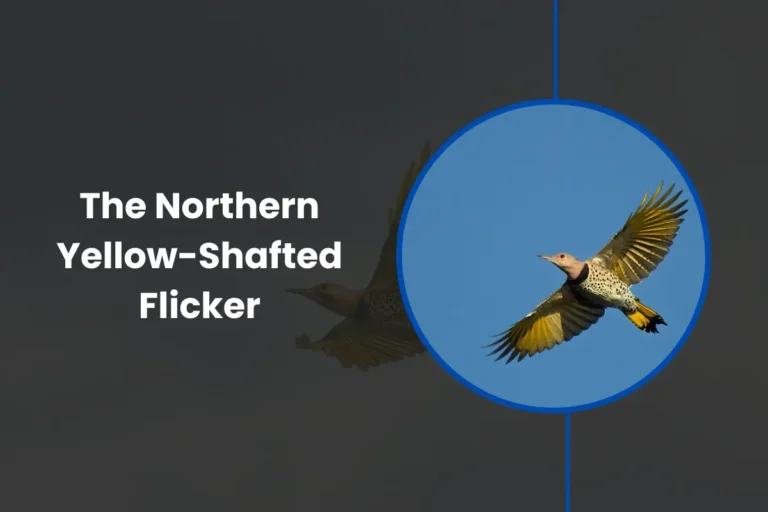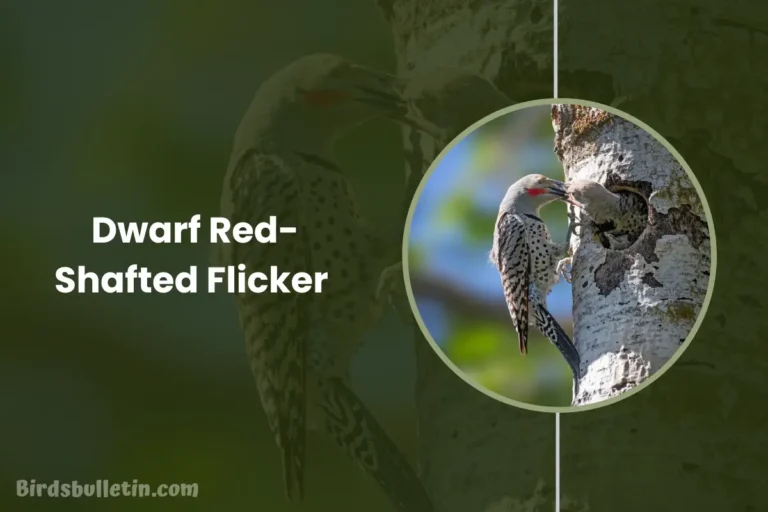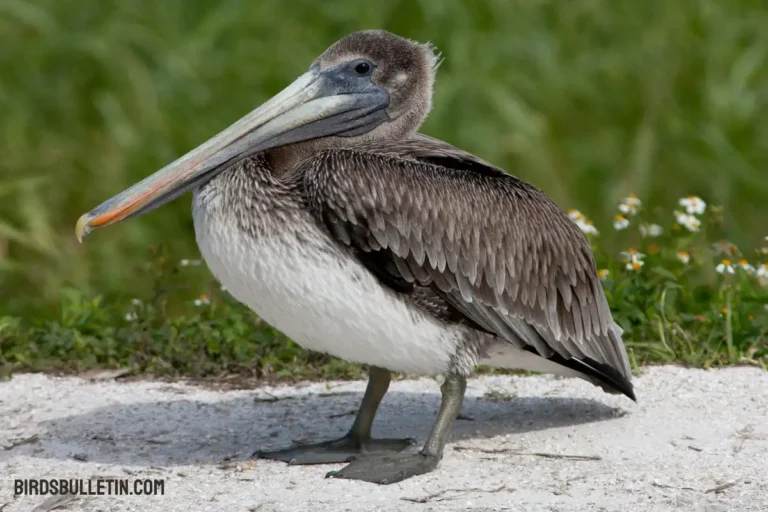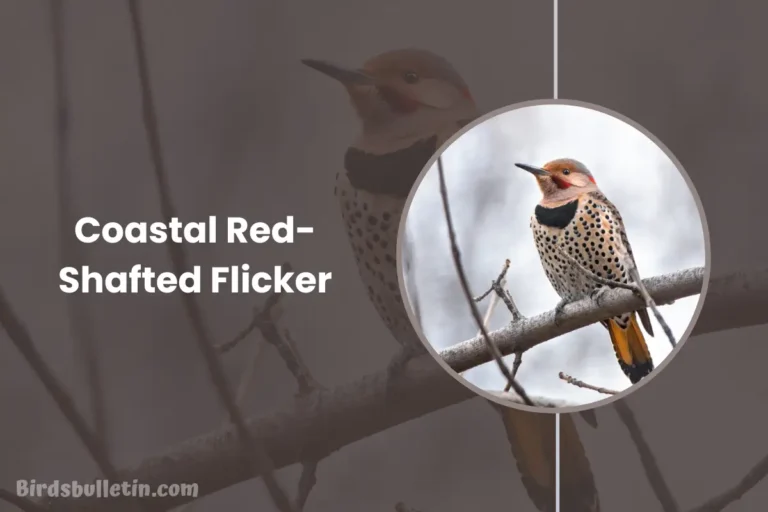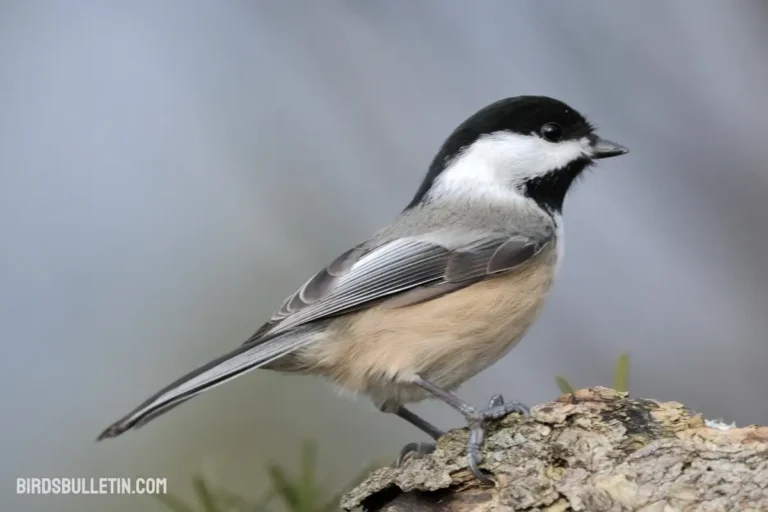Overview Of The Western Red-Shafted Flicker
The Western Red-shafted Flicker, known scientifically as Colaptes auratus cafer, is a striking woodpecker species found in western North America. This bird is known for its appearance.
In this overview, we’ll discuss various aspects of the Western Red-shafted Flicker, including its scientific classification, identification, distribution, and unique traits.
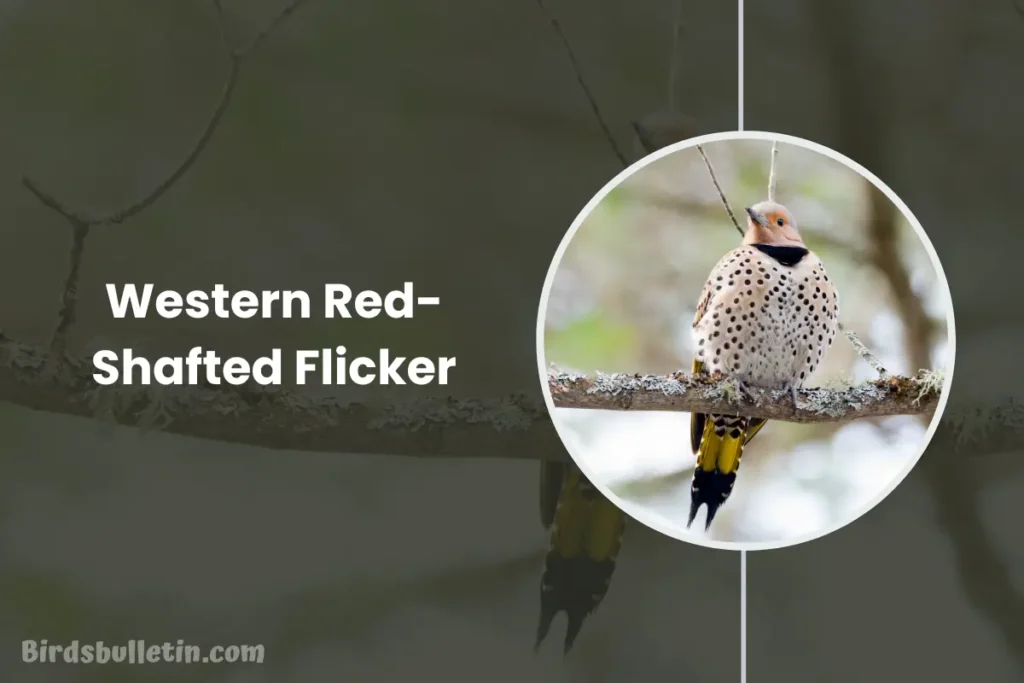
Want to learn more about bird subspecies:
Scientific Classification:
- Kingdom: Animalia
- Phylum: Chordata
- Class: Aves
- Order: Piciformes
- Family: Picidae
- Genus: Colaptes
- Species: Auratus
- Subspecies: Cafer (Western Red-shafted Flicker)
Identification
The Western Red-shafted Flicker is known for its distinct physical characteristics, making it relatively easy to identify. Here are some key features:
Size: They are medium-sized woodpeckers, typically measuring between 11 to 12 inches (28-31 cm) in length.
Plumage: Their plumage exhibits sexual dimorphism. Males typically have a red mustache mark on the lower part of their face, while females have a plain face without this marking. Both sexes have a prominent black crescent on the upper breast.
Coloration: Their upperparts are brown with black bars and spots. The undersides are pale with black spotting. The wings and tail feathers display a vivid salmon or red-orange coloration, especially when in flight, which gives this flicker its name.
Bill: They have a slightly curved, chisel-shaped bill, which is characteristic of woodpeckers.
Behavior: Flickers are known for their “flickering” flight pattern with rapid wing beats followed by short glides. They are often seen foraging on the ground for ants and beetles, using their long, barbed tongue to extract prey.
Location
The Western Red-shafted Flicker is primarily found in western North America. Its range extends from the western parts of Canada down to the southwestern United States and into northern Mexico.
Key locations where you might encounter this bird include:
- Pacific Coast: The Pacific Northwest region of the United States, including Washington, Oregon, and California.
- Rocky Mountains: Western regions of the Rocky Mountains in the United States and Canada.
- Southwestern United States: Parts of Arizona, New Mexico, and Nevada.
- Mexico: They are also found in parts of northern Mexico.
Unique Traits
The Western Red-shafted Flicker possesses several unique traits that set it apart from other woodpecker species:
Colorful Plumage: The vibrant red-orange wing and tail feathers are a distinguishing feature, making this flicker a striking and easily recognizable bird in flight.
Ground Foraging: Unlike many woodpeckers that primarily feed on tree trunks, flickers are often seen foraging on the ground. They use their specialized tongue to extract ants, beetles, and other insects from the soil.
Nesting Habits: Western Red-shafted Flickers often nest in tree cavities, but they are also known to use nest boxes. They can be quite adaptable in their nesting choices.
Migration: Some populations of Western Red-shafted Flickers are migratory, moving to lower elevations or southern regions during the winter months. Their migration patterns can vary based on location and climate.
Summary
The Western Red-shafted Flicker, scientifically known as Colaptes auratus cafer, is a distinctive woodpecker species with striking red-orange wings and tail feathers.
Found in western North America this medium-sized bird’s appearance varies between males and females, with the former displaying a red mustache mark.
Frequently Asked Questions
01. What is the difference between the Western Red-shafted Flicker and the Yellow-shafted Flicker?
The Western Red-shafted Flicker and the Yellow-shafted Flicker are subspecies of the Northern Flicker. The primary difference is in the coloration of their wing and tail feathers.
02. What is the diet of Western Red-shafted Flickers?
Western Red-shafted Flickers primarily feed on insects, especially ants and beetles. Their long, barbed tongue allows them to reach deep into ant nests and extract their prey. They also consume other invertebrates and occasionally eat fruits and berries.
03. Are Western Red-shafted Flickers migratory birds?
Their migration patterns can vary. In some regions, they move to lower elevations or southern areas during the winter months, while in other areas with milder climates, they are year-round residents.


